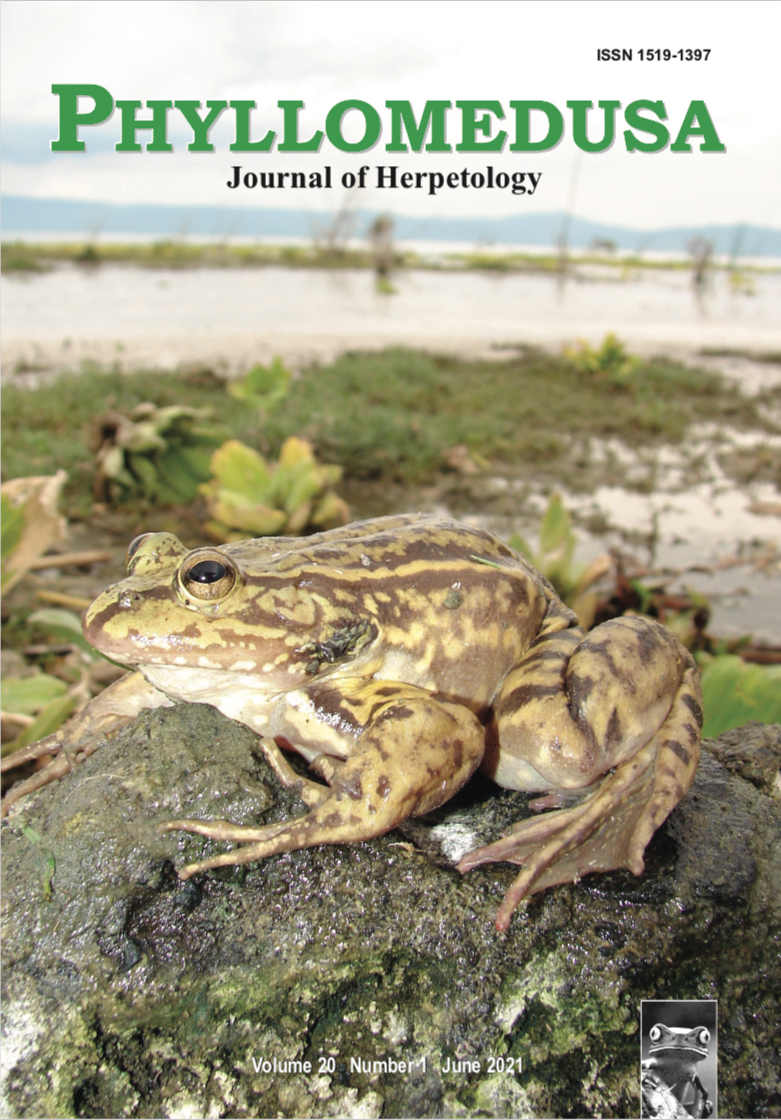Breeding site attendance and breeding success in Phyllomedusa trinitatis (Anura: Phyllomedusidae)
DOI:
https://doi.org/10.11606/issn.2316-9079.v20i1p53-66Keywords:
Breeding success, Inter-nesting interval, Phyllomedusinae, Reproduction, Trinidad Leaf FrogsAbstract
Using a natural marker, we documented breeding site attendance patterns by males and females of the Trinidad Leaf Frog, Phyllomedusa trinitatis. We followed attendance at a cluster of three isolated ponds over 53 and 56 consecutive nights in 2016 and 2019 respectively. Most females attended only once, but for those that attended more than once we calculated an inter-nesting interval (mean 27.6 days, N = 7). Males showed high pond fidelity, but some did attend at two of the ponds, always with a strong preference for one of them. Males showed three attendance patterns. A few attended on multiple consecutive nights (maximum, 19 nights); more were sporadic (one attended seven times over 46 nights with gaps of 15 and 19 days in the sequence); some attended only once (2016: 12, 2019: 15), but most were found to be present on multiple nights (2016: 38, 2019: 32). Our analysis suggested that these latter frogs were either newly recruited individuals or had been predated during the study. Our data show that rainfall has some influence on attendance. We found no relationship between male body condition and attendance pattern. In addition, there was no evidence that a particular male attendance pattern was optimal for breeding success.
Downloads
Downloads
Published
Issue
Section
License
Copyright (c) 2021 ESALQ-USP

This work is licensed under a Creative Commons Attribution-NonCommercial-NoDerivatives 4.0 International License.
All material originally published in Phyllomedusa belongs to Escola Superior de Agricultura Luiz de Queiroz - Universidade de São Paulo. All contents are under a license of Creative Commons BY-NC-ND.


 Impact Factor (JCR): 0.600
Impact Factor (JCR): 0.600 CiteScore: 1.0
CiteScore: 1.0